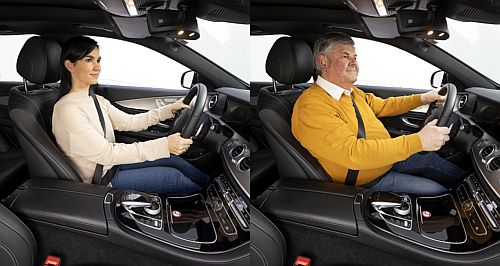Make / Model Search
News - ZFZF Passive Safety System designs new seatbelt techGerman maker says the system can better adapt to a range of occupant sizes and weights5 Mar 2024 By MATT BROGAN A NEW seatbelt system from ZF Passive Safety Systems will significantly improve seatbelt force limitation by adapting to the size and body weight of vehicle occupants.
Based around a Multi-Stage Load Limiter (MSLL), the technology is able to individually adjust to differing body shapes helping to further reduce the consequences of collisions for all vehicle occupants, while at the same time helping OEMs to meet increasingly tough NCAP regulations.
ZF Passive Safety Systems says the genius behind the technology is that it not only provides individual control options for the component itself, but is able to interreact with other vehicle safety systems to provide a heightened level of restraint.
The German-based company says the feature turns the humble seatbelt into an intelligent and flexible controllable safety device”.
In being able to readily intervene in the earliest stage of a crash, the seatbelt tightens around the body before the impact (pre-tensioning) to reduce belt slack and to decelerate the body in a controlled manner after the impact, transferring it accurately into the airbag.
To date, the system has been trialled successfully on standardised test subjects (crash test dummies).
“The demands of the adaptivity of safety systems are increasing, both in the expectations of end customers and in the NCAP test criteria,” said ZF Passive Safety Division managing director Rudolf Stark.
“Our new belt system makes it easier for vehicle manufacturers to meet the increased requirements and specifically reduces the consequences of crashed by adapting even better to the occupant.”
Many current seatbelt systems already feature a two-stage controllable load limiter. But the ZF system takes the technology a step further, with multiple switchable load limiters. Mr Stark says the technology can vary the restraining forces provided by the belt more evenly over the entire course of the crash.
The system is design to make it possible to respond individually to people of different stature and weight.
ZF says that in the future, the path to more variability in belt forces will lead via the sensory recording of the interior to recognise even better which people are sitting where, and which belt forces are to be applied individually in both minor and major crashes.
This will be achieved via the use of an interior camera, for example, which detect when the driver operates the infotainment system or turns their head toward the rear occupants, the seatbelt itself providing another “level of valuable information”.
In the newly developed system, the belt can measure the pull-out length and thus allow conclusions to be drawn about body circumference and therefore stature and weight. This is combined with the vehicle’s networked restraint system to know from which direction an impact is coming and brace the occupant accordingly.
ZF says that, in this way, the MSLL can offer “small and light people” better adapted individual protection in the event of moderate crashes (with impact speeds up to 35km/h). This applies to children in the rear seat and to older passengers who have a higher risk of injury due to age dependent changed bone structure.
Further, it is proposed that the system can potentially improve occupant safety for heavy people in overload accidents (with impact speeds above 56km/h).  Read more16th of January 2024  Four-star ANCAP rating for Hyundai KonaVulnerable Road Users, Safety Assist scores drag down ANCAP test result for new Kona5th of January 2024  Safety standards falsified at DaihatsuDaihatsu production shutdown to address safety issues dating back three decades4th of January 2024  Five-star safety for Chery Tiggo 7 ProChinese-made Chery Tiggo 7 Pro SUV scores top marks in latest ANCAP testing round |
Click to shareZF articlesMotor industry news |











Facebook Twitter Instagram